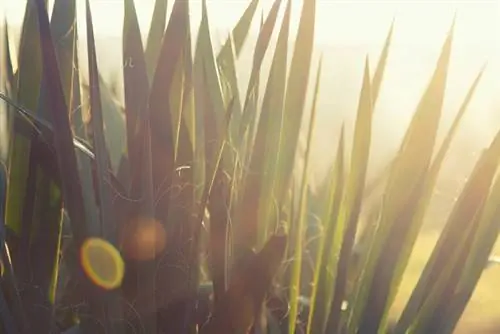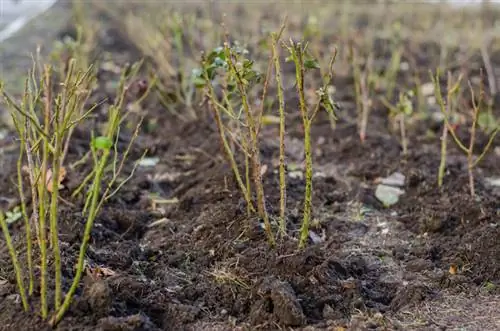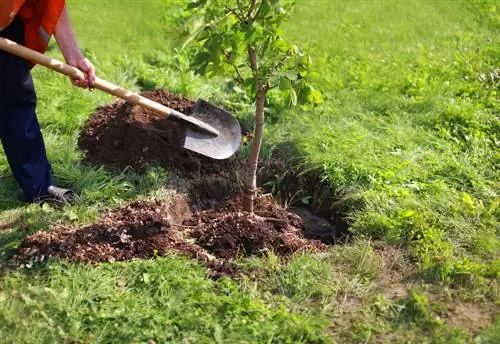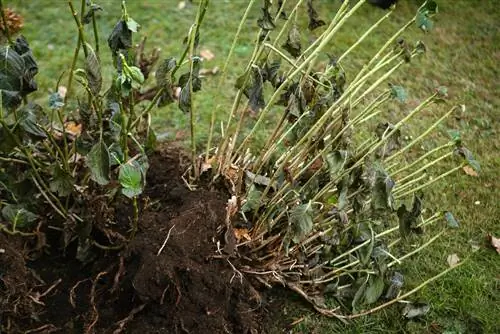- Author admin [email protected].
- Public 2023-12-16 16:46.
- Last modified 2025-01-23 11:21.
Yucca elephantipes, as the yucca palm (which, from a botanical point of view, is not a palm tree at all) is correctly called in technical language, is one of the most popular houseplants in Germany. The asparagus plant can reach heights of up to two meters or more, even when grown in containers. It's no wonder that the proud owner of such a plant would like to cultivate it outdoors. Although the indoor yucca enjoys a bright and warm place outdoors over the summer months, it is - in contrast to the Yucca filamentosa - not winter hardy.
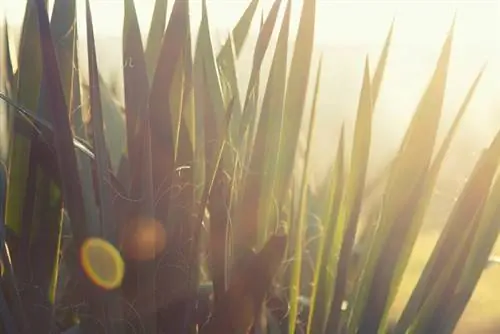
When can the yucca palm be placed outdoors?
The yucca palm can be placed outdoors from the end of May or beginning of June. Make sure you have a protected, bright location and avoid direct sunlight. Get the plant used to the changed conditions slowly and only put it outside for a few hours as long as the temperatures do not fall below 16 °C.
Indoor yuccas can be left outside in summer
Yucca elephantipes is easily recognizable by its typical, thick trunk and the palm-like tuft of leaves with the long, wide and dark green leaves. This type of palm lily is preferably cultivated in a bright apartment or winter garden, but can also be grown outdoors during the warm summer months. Make sure you have a sheltered and bright location, but avoid direct sun ora place in full sun. Instead, slowly get the plant used to the changed conditions and initially only put it outside for a few hours. The temperatures should not be below 16 °C. The plant also does not like damp weather like in rainy summers. Place the indoor yucca on the balcony or terrace from the end of May / beginning of June at the earliest.
Winter-hardy garden yuccas for year-round outdoor cultivation
In contrast to the frost-sensitive Yucca elephantipes, species such as the Yucca filamentosa (filamentous palm lily) or the candle palm lily (Yucca gloriosa) are hardy and can remain outdoors all year round. These yucca species can tolerate temperatures down to minus 15 °C and can therefore be found in many gardens. Light winter protection is only necessary in very harsh winters. It is much more important to ensure that the soil is loose, well-drained to protect against waterlogging and that there is sufficient distance from other plants - yuccas can grow very tall and just as wide.
Young garden yuccas are still very sensitive
However, young garden yuccas, such as cuttings or offshoots, are quite sensitive to cold. These should be kept cool but frost-free for at least the first few winters (so it's better not to plant them out yet!) and gradually get used to harsher weather conditions.
Tip
Whether hardy or not, yuccas generally do not tolerate rain; especially not if it comes frequently and/or in large quantities. Therefore, you should protect all yuccas from rain.

